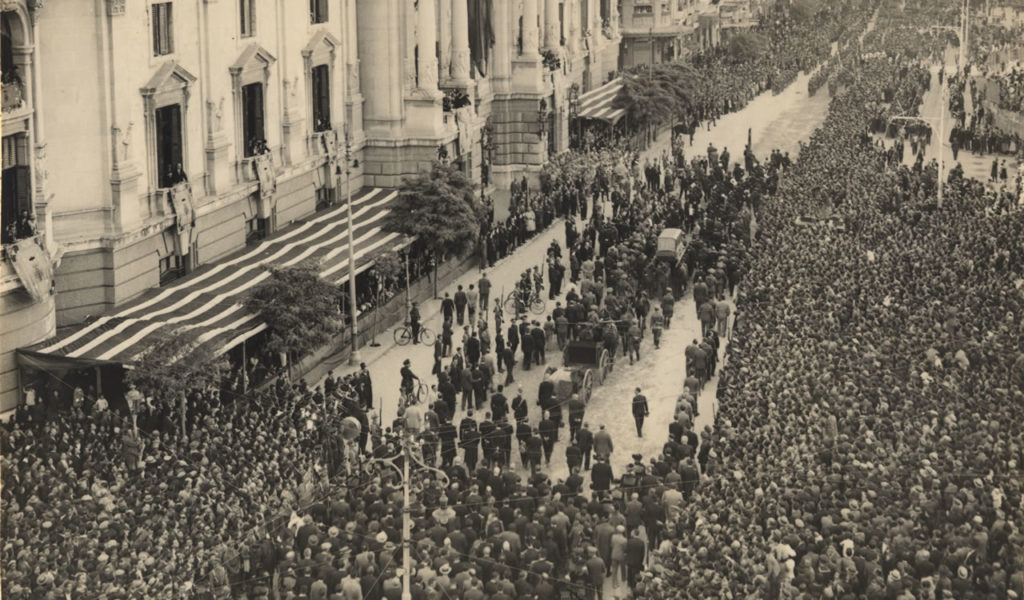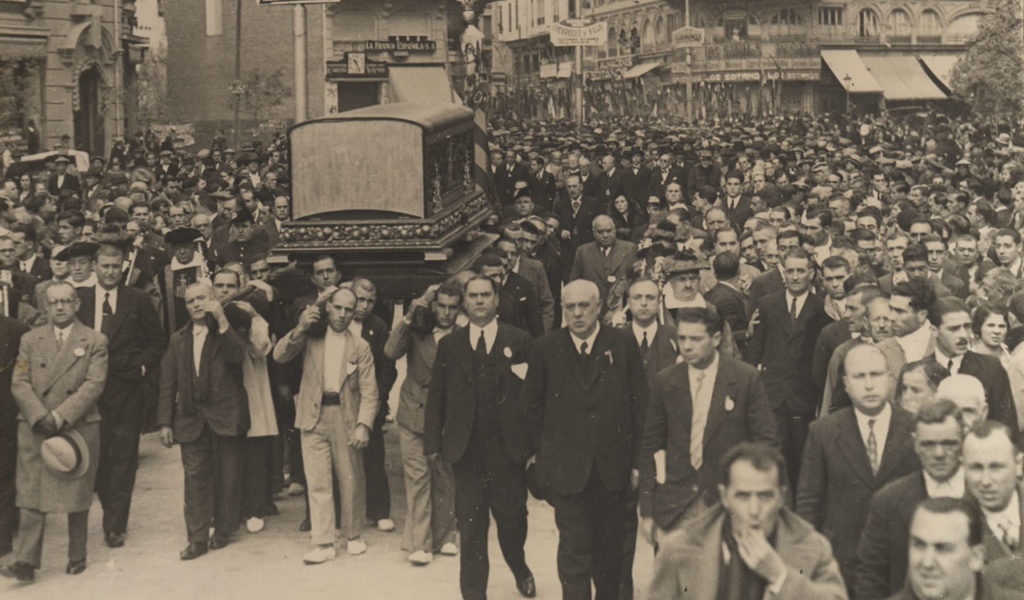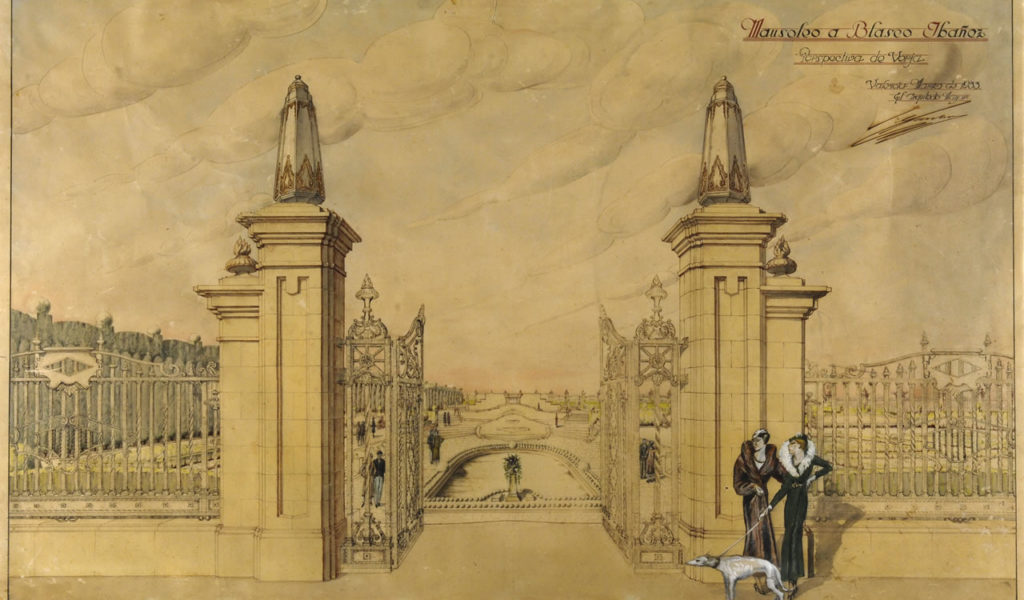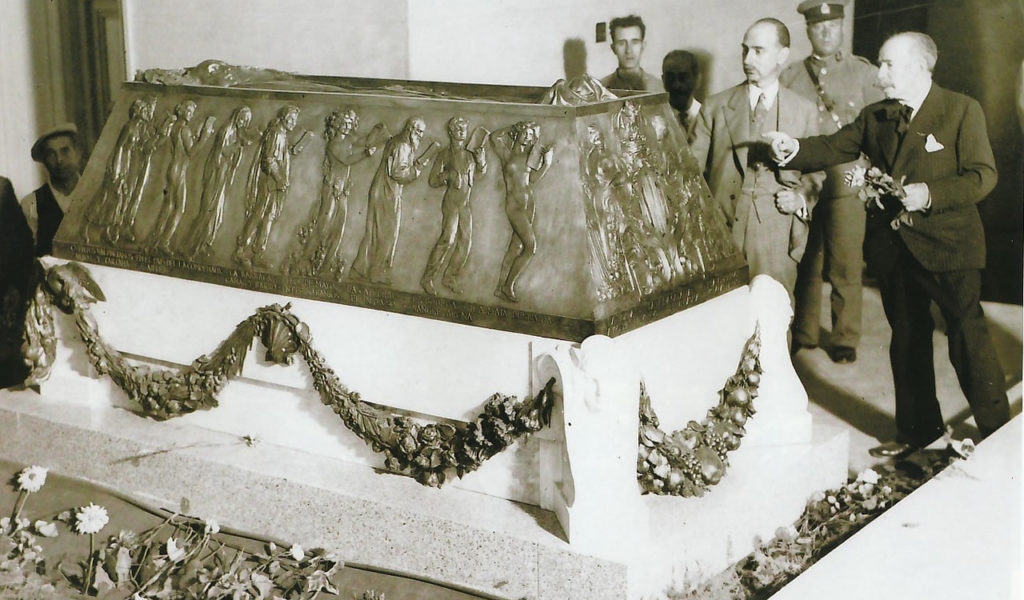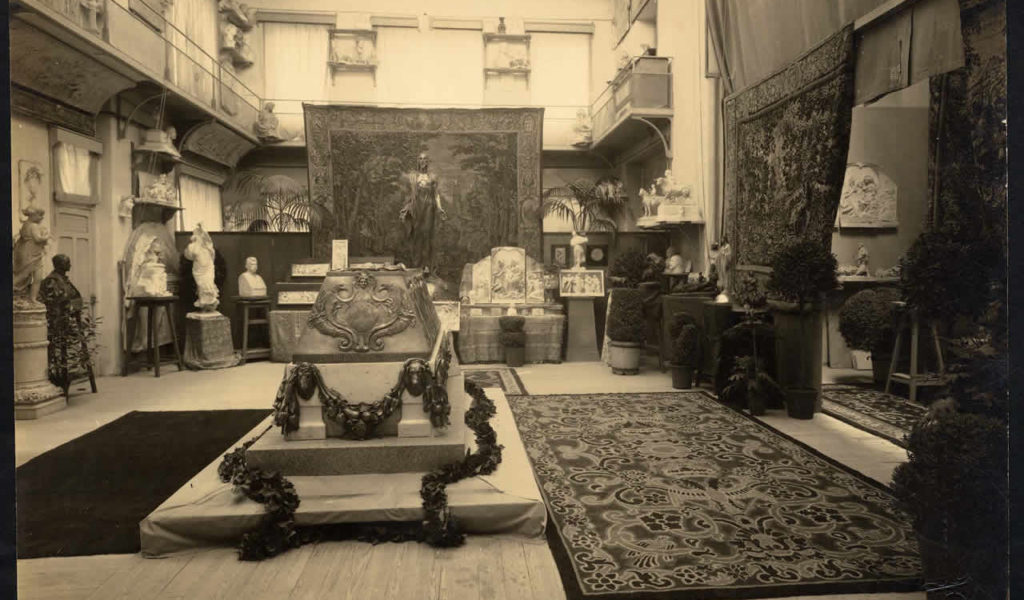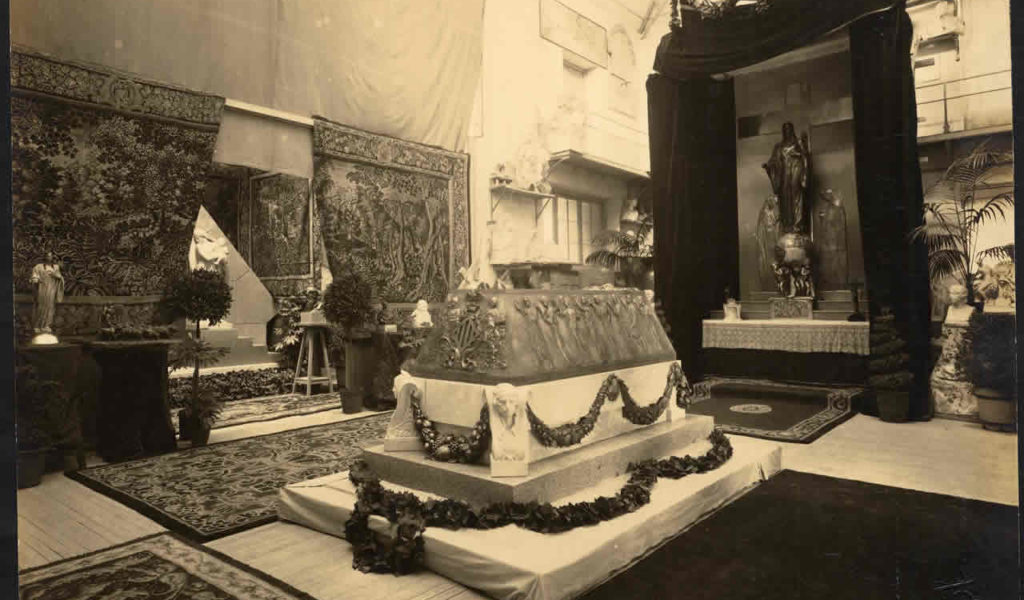The sarcophagus
At the entrance to the General Cemetery we find the sarcophagus that Mariano Benlliure made in 1935 and which was supposed to preside over the funerary monument dedicated by the city to Vicente Blasco Ibáñez. It is a magnificent marble, bronze and brass cenotaph, with the recumbent figure of the insignia novelist at the top and figures representing his novels on the sides.

The arrival of the body of Vicente Blasco Ibáñez in Valencia
Vicente Blasco Ibáñez died in Menton (France) on January 28, 1928. Three years later, after the establishment of the Second Republic, a Pro-Relocation Committee was formed to fulfill the writer’s wish to rest on the shores of the Mediterranean . With the agreement of the national government, the city council of Valencia spearheaded the initiatives proposed for the transfer of his mortal remains and, with an authentically idolatrous dimension, to honor the memory of one of the most universal Valencians.
“An event whose splendor will never be forgotten”
Surely, Valencia experienced one of the most crowded episodes in its history on October 29, 1933, because many more than 300,000 people gathered, with an official entourage of 15,000 people led by President Alcalá Zamora, to receive and accompany the coffin with the remains of Blasco Ibáñez. Since he disembarked in the port, aboard the battleship Jaime I, he was given honors as head of state. As the coffin weighed around 700 kg, half a hundred groups of bearers were formed for its transfer to the Llotja, where the coffin was exposed for several days, to be taken later to the Councilors’ room of the Cemetery.
In memory of the Republican leader
In 1933, the city council of Valencia commissioned the municipal architect Javier Goerlich to erect a funerary monument to Blasco Ibáñez in the General Cemetery. The project consisted of a Valencian garden, in the center of which would be the crypt and a partially buried mausoleum, lit by a large skylight, through which one could contemplate the sarcophagus located in the center of the lower level, under a beam of zenithal light. On January 28, 1935, the first stone of the pantheon was laid, immediately starting work that was stopped when the Civil War broke out. When the mausoleum was demolished in 1939 and the crypt was blinded, the work was advanced and two of the mosaics, with scenes from Blasco’s novels, covering the side walls were already visible.
The artistic tribute of the friend
After receiving, at the beginning of February 1935, the order from the Valencia City Council to make the sarcophagus of his friend Vicente, Mariano Benlliure finished his work in just two months (April 29).
On a Carrara marble pedestal, rests a cenotaph designed with a symbolic purpose and which was in line with the requirements of its location. As access to the mausoleum had to be made through the upper floor and, therefore, the first view of the sarcophagus would be from above, Benlliure modeled on the upper face the reclining figure of Blasco Ibáñez wrapped in a shroud, with the head resting on a pillow and surrounded by laurel branches.
On the lateral faces, visible when descending to the lower floor excavated in the ground, he modeled in low relief a sequence with the characters of his most famous novels, with the titles in a band that runs along the base.
On the back side he represented the terrestrial sphere flanked by two cornucopias, two eagle heads and laurel branches, with the inscriptions already transcribed, and above it, illuminating it, the solar disk with a winged head, which he could be identified with the mythical Prometheus, who had given his name to the publishing house founded by the writer.
Finally, on the front face, which coincides with the feet of the deceased, he modeled the coat of arms of the city of Valencia accompanied by the allegorical figures of Arts and Letters.
The corners of the marble pedestal are finished with two busts of popular characters, a man and a woman dressed in the typical clothing of the Valencian vegetable garden, whose products make up the brass garlands that surround the entire perimeter.
